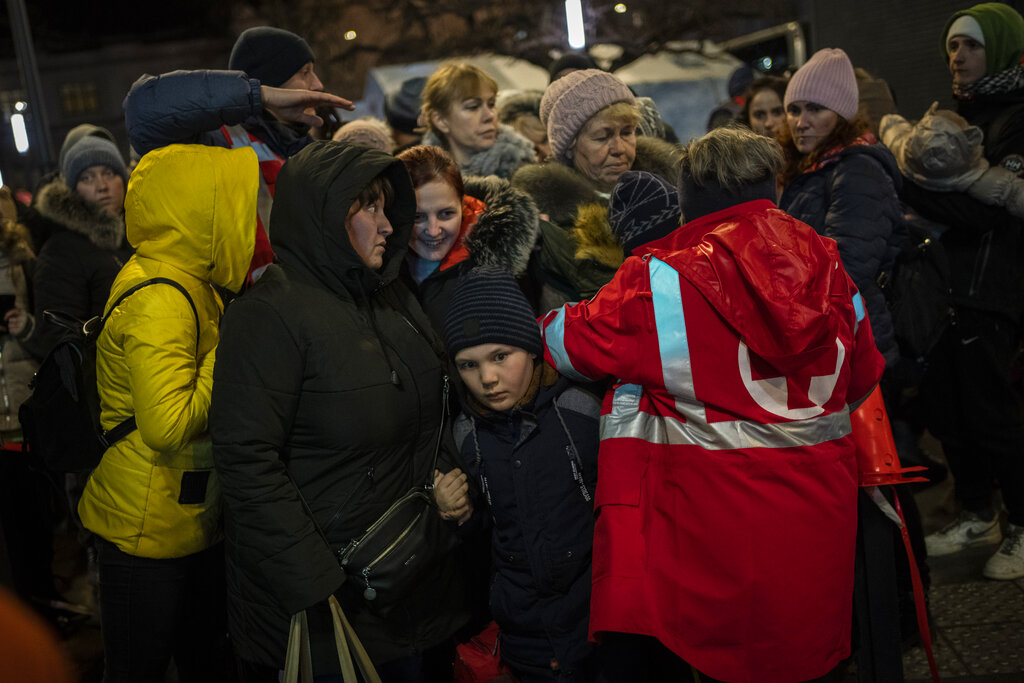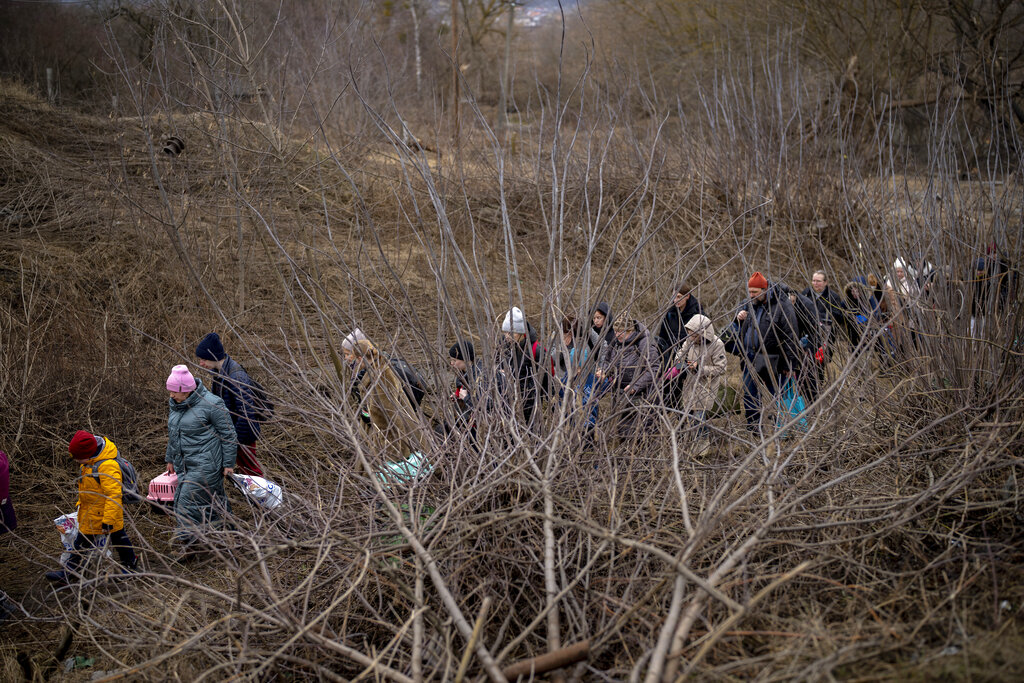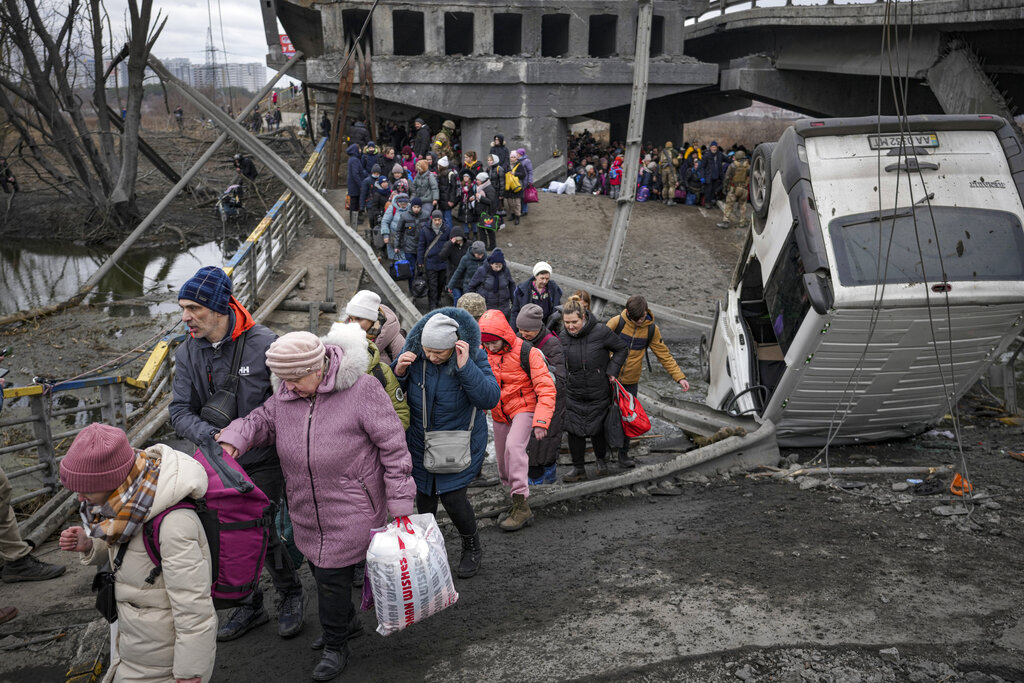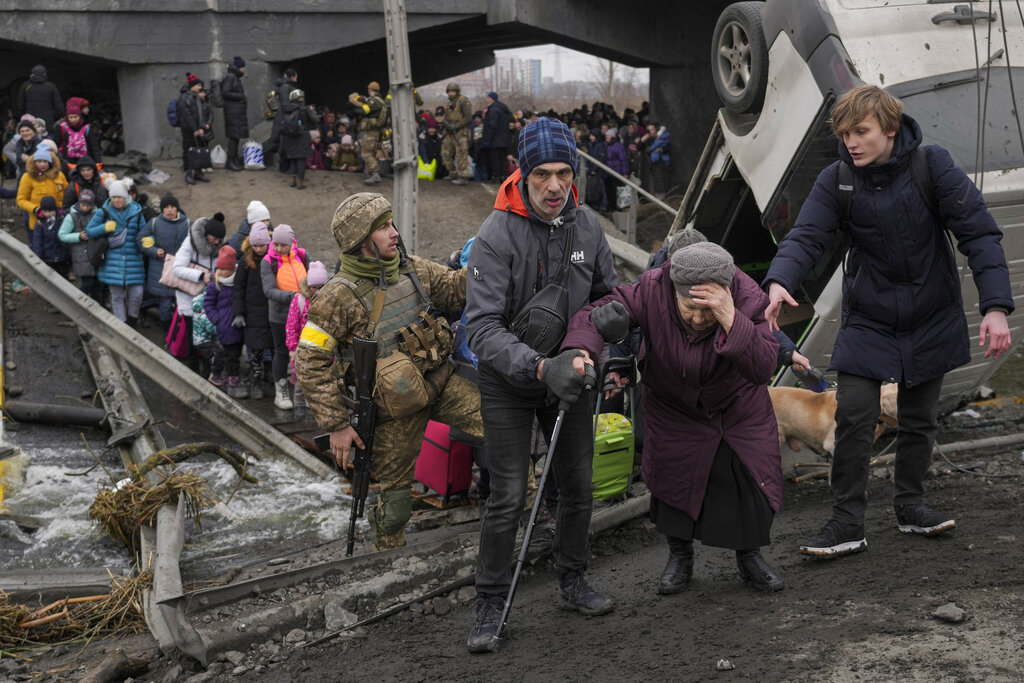WASHINGTON (AP) — The head of the United Nations’ refugee agency says that more than 1.5 million refugees have crossed from Ukraine into neighboring countries since Russia invaded.
Filippo Grandi, the U.N. high commissioner for refugees, tweeted Sunday that it is “the fastest-growing refugee crisis in Europe since World War II.”
WHAT HAS THE U.S. DONE TO HELP REFUGEES SO FAR?
The U.S. has provided $54 million in food and other assistance to people inside Ukraine and has pledged to send more, according to Samantha Power, head of the U.S. Agency for International Development. That aid is critical because conditions in Ukraine are horrific and growing worse. Food is scarce as millions of displaced people inside the country try to escape the Russian attack.
On Thursday, the Biden administration announced it would offer temporary protected status to Ukrainians already inside the United States. Members of Congress and advocates welcomed the announcement, but the effects are modest. The Department of Homeland Security estimates that about 75,000 people are eligible for the program and it’s only good for 18 months unless extended. Moreover, the program leaves people in immigration limbo because beneficiaries cannot necessarily convert their status into permanent legal residency or U.S. citizenship.
WILL THE U.S. BE TAKING IN UKRAINIAN REFUGEES FOR RESETTLEMENT?
It might. White House spokeswoman Jen Psaki says the U.S. would accept Ukrainian refugees. But the administration says that, for now at least, most of the refugees apparently want to stay in Europe. That’s where many have families, they can work and then return home if that is possible at some point.
The administration previously said it would accept up to 125,000 refugees in the 2022 budget year. That annual cap had been cut to a record low 15,000 under President Donald Trump. In setting the annual target for refugees, the Biden administration set aside 10,000 refugee visas for people from Europe, but it could expand that number to take in more Ukrainians if needed. The White House has said it will work with the United Nations and European countries to determine whether people who have fled Europe will need permanent resettlement in the U.S. or elsewhere.
The 125,000 does not include the 76,000 Afghans who came to the United States after the American withdrawal from Afghanistan in August.
One thing the U.S. could do immediately to help Ukrainians would be to expedite the processing of several thousand members of religious minority groups, including Jews and evangelical Christians, who have family in the United States and have already applied to come under what’s known as the Lautenberg program.
CAN THE U.S. REFUGEE SYSTEM ABSORB A NEW WAVE OF REFUGEES?
Yes, although it won’t be easy, according to refugee resettlement experts.
The Trump administration cuts to the refugee program forced resettlement agencies to lay off staff and close offices. They have been struggling for months to help the tens of thousands of Afghan refugees who came after their country fell to the Taliban, and a complex problem was made more so by high housing costs and the coronavirus pandemic.
Despite the difficulties, the U.S. could handle the arrival of more refugees, says Mark Hetfield, president and CEO of HIAS, one of the nation’s nine resettlement agencies.
“There’s so much interest in helping these people that the resources would be there, the volunteers would be there,” Hetfield said. “It would be a challenge because we are all stretched too thin. But we would definitely make it work.”



















